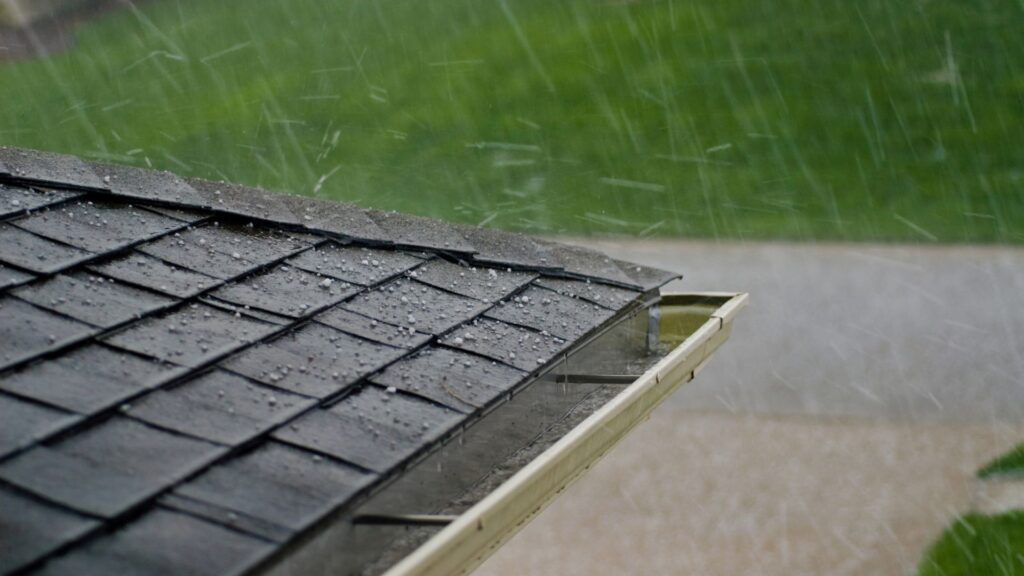
Hail Risk Analytics: Imagery-Based Roof Age Key to Superior Predictiveness
Severe weather has long been considered an attritional risk for property insurers—but long-term trends suggest those days may be over.
Hail accounts for 50-80% of all thunderstorm-related property losses, with average insured losses now topping $20 billion annually. In 2023, that figure topped $51 billion in insured hail losses. For P&C insurers, this is no small matter. Unlike other extreme weather events, hail losses occur every year, are highly damaging, and can impact multiple states during a single storm.
It’s nearly impossible to avoid hail claims without ceasing to write policies in heavily exposed areas. Instead, the goal for carriers should be to accurately align pricing with risk specific to an individual property. CAPE research has revealed what may be the most reliable and efficient way ever to achieve that—and suggests approaches that fail to include roof age and experience in understanding hail risk may lead to costly mistakes.
Hail Impact: Roof Condition and Vulnerability Characteristics
Let’s start with the basics: Roofs are the part of buildings most vulnerable to hail. Damage severity—and consequently, replacement and repair costs—vary depending on specific roof attributes. Roof size, composition, geometry, and condition all impact hail vulnerability. Roofs in severe condition are about 2x as likely to suffer a wind/hail claim than those in excellent condition.
The type of roof covering can also increase the risk of hail claims. So can roof complexity, which takes into account the number of facets. Overhanging tree branches have been shown to protect roofs in the event of smaller hail, but increase the likelihood of damage in the event of large hailstones and wind.

Traditional methods of assessment aren’t enough to understand hail risk on their own—and often provide a view of hail risk that’s either too broad or incomplete. As a result, reliance on just these methods can create a false sense of security.
Learning From ‘Experience’
Among key findings from CAPE research: As much as 25% of homes in hail-prone areas have undetected hail damage, making them twice as likely to suffer a claim in the event of a hailstorm.
Given the information traditionally available, many carriers would quote and bind these properties under the mistaken belief they’re good risks. But even today’s highest-resolution imagery-only analytics technologies can miss pre-existing roof damage.
According to our analysis, even very minor hail incidents can degrade roof materials like asphalt shingles—including incidents that never led to a claim or resulted in obvious visual damage. Even damage from larger hail incidents can go undetected. Our research shows that in imagery-based assessments, 60% of homes with significant recent hail incidents (multiple events or a single event with hail sizes over 1.75 inches) still display good or excellent roof conditions.
Properties with a higher frequency and severity of hailstorms in the previous two years are 50% more likely to have future claims due to undetected damage
What’s more, our research shows that properties with higher frequency and severity of hailstorms over the preceding 24 months are 50% more likely to have future claims stemming from undetected damage. While that may seem like an obvious conclusion—properties hit by hail storms in the past are more likely to submit hail-related claims in the future—it’s the timeframe and the quantified probability of those claims that matter.
This is what we refer to as a property’s recent “hail experience,” and it’s much more than just weather data. Historical hail event data is based on limited human reporting. Two homes less than a mile apart can have very different experiences in hail size and frequency.
Instead, our hail experience metric is based on forensic weather analytics and other data inputs that go beyond satellite and aerial imagery to include weather data, past claims, and other data points—all analyzed using scalable machine learning to establish property-specific hail risk.
How Adding Roof Age Amplifies Accuracy
For property insurers, roof age has long been a proxy for the risk associated with a property—hail or otherwise. CAPE’s research has uncovered a key finding: Adding roof age to the complete climatological approach described above increases predictiveness. In fact, roof age is now the most important factor in CAPE’s Hail Vulnerability Rating model.
However, not just any old roof age data will do. Traditional methods of collecting information on roof age aren’t especially reliable. Agent- and owner-supplied roof age is often underestimated—even wildly so. Estimates from many providers draw from permit data that is sparsely available and not always indicative of actual work completed when it is. For this reason, carriers should source roof age providers that leverage historical aerial imagery to provide the most reliable roof age estimates available today.
Nine-year-old roofs are 2x more likely to be extremely vulnerable to hail than new roofs
Our nationwide analysis of homes found that nine-year-old roofs were 2x more likely to be extremely vulnerable to hail than new roofs. Zooming in on that segment, 61% of nine-year-old roofs fall into the most vulnerable cohort of scores.

Combining accurate roof age data with imagery- and climatology-based analytics is optimal for unlocking the best insights for pricing and coverage decisions. Among other things, this level of hail risk predictiveness can aid in inspection prioritization and new business decisions, coverage eligibility assessments, pricing segmentation, inspections, re-underwriting, and insurance-to-value adjustments during renewals.
Learn More
For more about CAPE’s holistic approach to hail risk, visit our Hail Intelligence page or contact us here.
Aggregate statistics created using data produced from Vexcel, EagleView, Nearmap, and other imagery providers.

